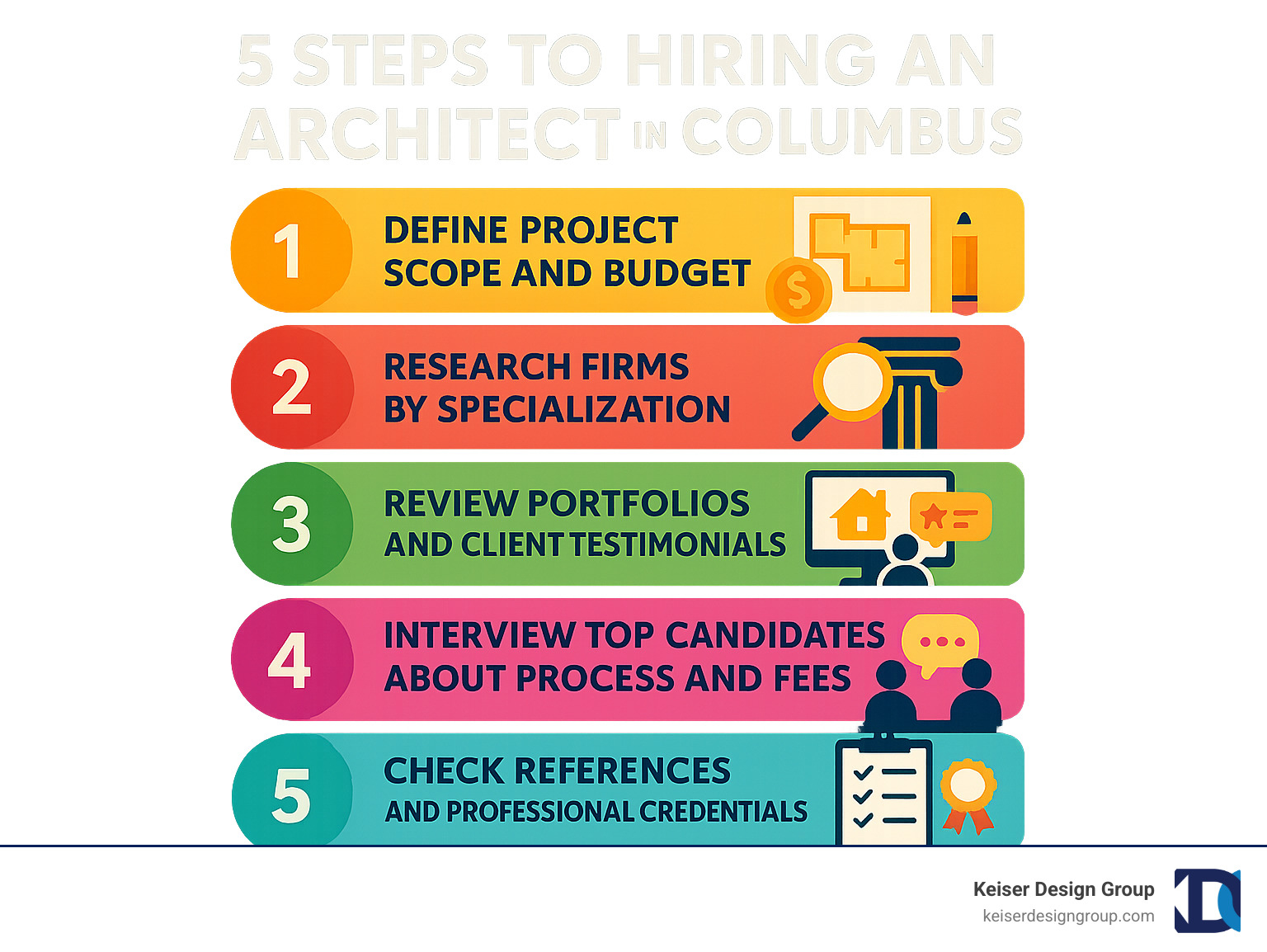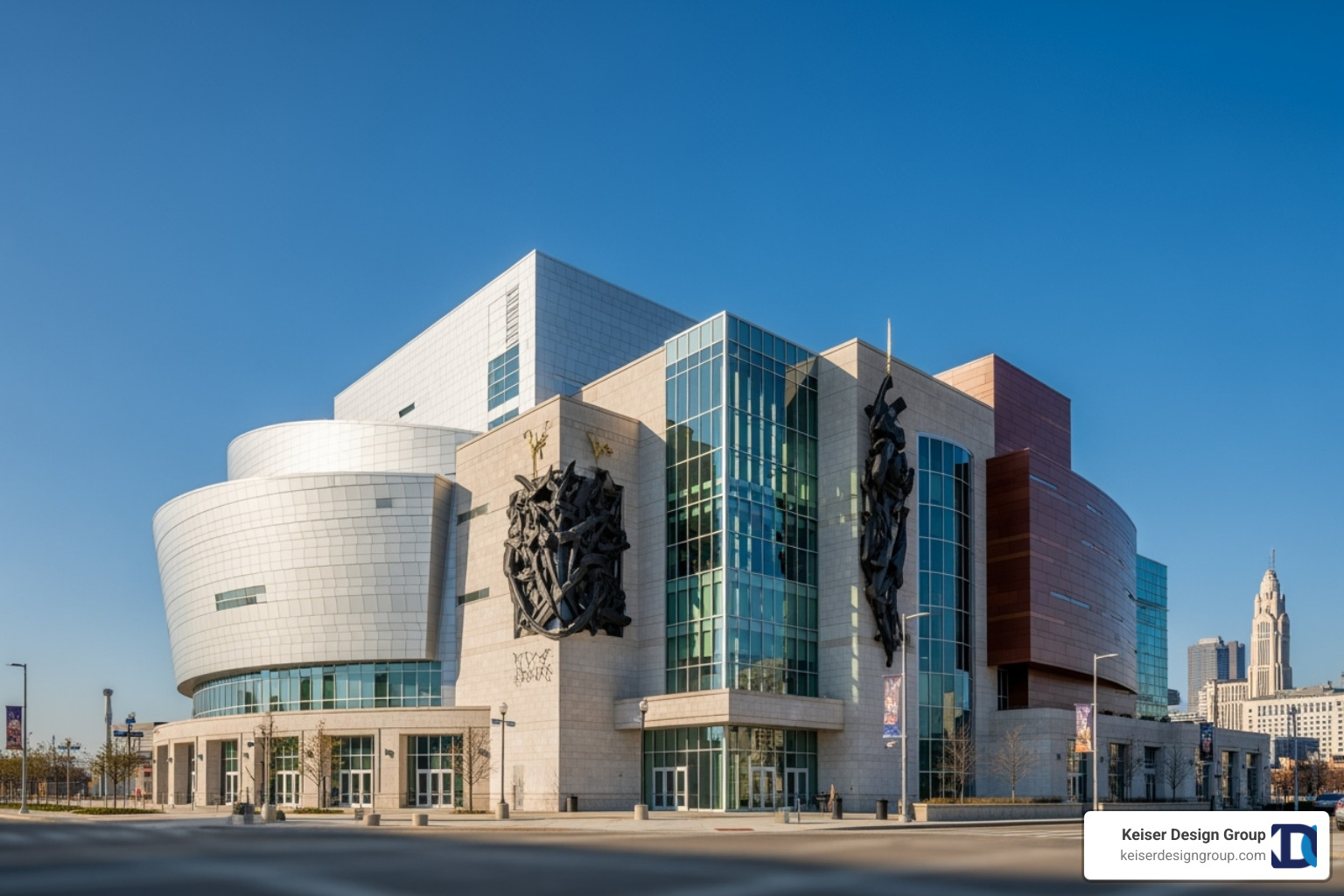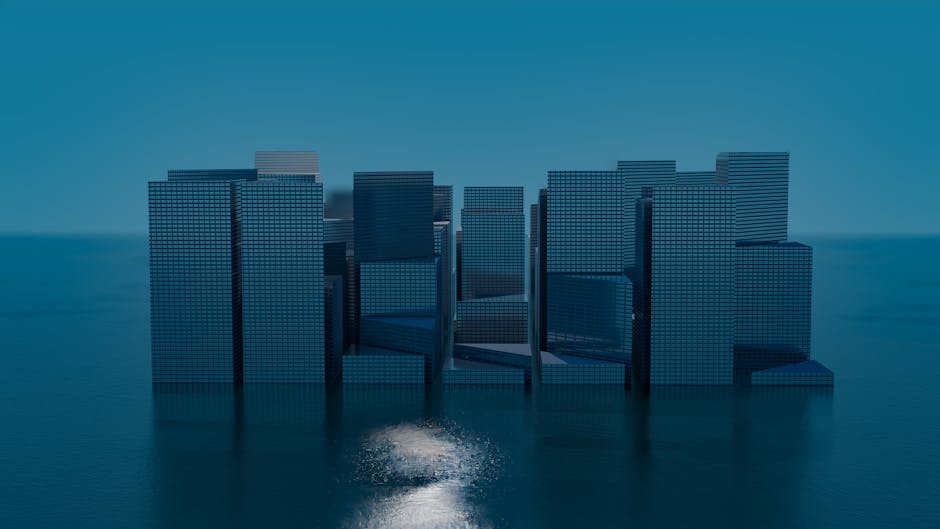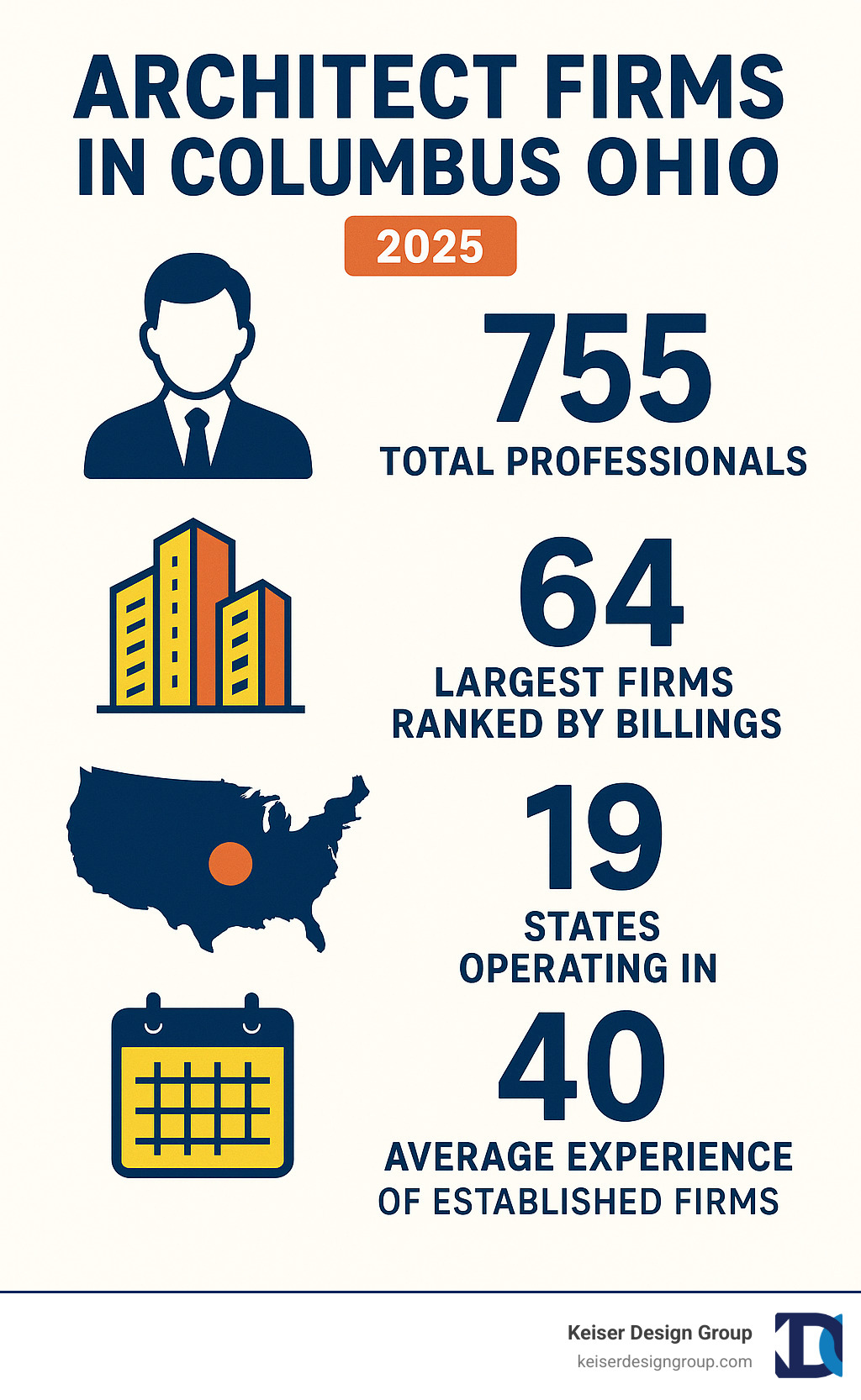Why Columbus Has Become a Hub for Architectural Excellence
Architect firms in Columbus Ohio form a thriving ecosystem that is rapidly reshaping Central Ohio’s skyline. With more than 750 architectural professionals and dozens of established firms headquartered here, the city offers a deep bench of expertise for any project—whether it’s a corporate headquarters, community facility, or custom home.
What truly sets Columbus apart is the range of specialties represented. Full-service studios, commercial experts, residential designers, and mission-focused practices contribute to a dynamic environment where ideas cross-pollinate. This mix of experience, from firms with decades of community impact to agile young practices, ensures that both time-tested wisdom and cutting-edge creativity inform the city’s most important projects.
I’m Dan Keiser, Founder and Principal Architect of Keiser Design Group, and I’ve had a front-row seat to this evolution since launching my practice in 1995. Over nearly three decades, I’ve watched Columbus rise from a regional hub to a nationally recognized center of architectural excellence. I’m proud that our team continues to help clients steer the process with a simple, worry-free experience.

The Columbus Architectural Landscape: More Than Just Blueprints
The numbers tell an impressive story: Columbus is home to 755 architects, architecture firms, and building designers, one of the highest concentrations of design talent in the Midwest. The 64 largest architecture firms alone demonstrate the economic muscle these practices bring to our region.
What’s truly exciting is the diversity and quality. I’ve watched local studios grow into practices operating across 19 states, proving our city is a launching pad for architectural excellence. This healthy competition drives innovation, as firms stand out through specialized services and deep community connections. The market’s mix of experience, with firms boasting over 40 years of practice alongside fresh studios, creates a dynamic where established wisdom meets cutting-edge ideas.
What Defines a Top-Tier Firm?
After nearly three decades in this business, I’ve seen what separates good firms from exceptional ones. It’s not just about building bigger structures; the best architect firms in Columbus Ohio tackle tough challenges with creative problem-solving and a clear design vision.
For example, adaptive reuse projects require seeing potential where others see problems and integrating modern needs with historic character. Top firms also weave sustainable design into their core philosophy rather than adding it as an afterthought.
Community impact is another key differentiator. The best firms contribute to projects that genuinely improve how we live and work, such as healthcare facilities that promote healing or mixed-use developments that revitalize neighborhoods.
Most importantly, top practices understand that client relationships are paramount. Architecture is a collaborative process built on trust, clear communication, and a commitment to bringing a vision to life. Firms that prioritize transparency and listen to their clients build reputations for excellence.
The Scope of Projects Shaping the City

The variety of projects shaping Columbus reflects our city’s energy. Mixed-use developments are creating vibrant, walkable communities by combining residential, commercial, and public spaces, showcasing the advanced capabilities of local talent.
New corporate headquarters demonstrate our city’s appeal as a business destination. These projects, from automotive facilities to innovative offices, require architects who understand both functional needs and brand expression, fueling a cycle of growth.
Public spaces and community revitalization projects highlight the social responsibility of architecture. Libraries, community centers, and cultural facilities require a balance of public accountability and design excellence, skills many Columbus firms have honed over years.
The contrast between downtown development and suburban growth presents unique challenges. Urban projects must steer existing infrastructure and limited space, while suburban projects require sensitivity to environmental factors. Successful firms excel in both contexts.
A Spectrum of Services: What Columbus Architects Offer
When you’re planning a significant project, you want more than just pretty drawings. The best architect firms in Columbus Ohio understand that successful buildings require a comprehensive approach that covers everything from initial concept to final construction.
Full-service firms have become the gold standard because they handle all aspects of your project under one roof. Instead of juggling multiple consultants and trying to coordinate between different companies, you get a single team that takes responsibility for your entire project. This approach eliminates the finger-pointing that can happen when things go wrong and ensures everyone is working toward the same goal.
The design-build process has gained tremendous popularity in recent years, and for good reason. When your architect works closely with the construction team from day one, communication flows smoothly and problems get solved before they become expensive headaches. This collaboration approach often results in better buildings, shorter timelines, and fewer surprises along the way.
Project management capabilities separate the professionals from the hobbyists. A great architectural firm doesn’t just hand you a set of drawings and wish you luck. They guide you through permit applications, coordinate with engineers and contractors, and stay involved until your project is complete. This comprehensive approach gives you peace of mind and protects your investment.
Guide to Commercial Architectural Services
Core Architectural & Design Services
Architectural design might seem like the obvious starting point, but modern projects require expertise that goes far beyond creating attractive buildings. Master planning involves understanding how your project fits into the bigger picture – considering everything from traffic patterns to future development in your area.
Site planning requires balancing multiple competing interests. You want to maximize your building’s potential while respecting natural features, provide adequate parking without creating a concrete wasteland, and create attractive outdoor spaces while meeting all the regulatory requirements. It’s like solving a complex puzzle where every piece affects the others.
Interior design has become increasingly important as people recognize how much their physical environment affects their daily experience. The best architectural firms include interior designers who understand how space planning, lighting, and material selection work together to create environments that actually improve people’s lives.
Construction administration means your architect stays involved during the building process to ensure everything gets built according to plan. They review contractor submittals, conduct regular site visits, and resolve issues as they come up. This oversight protects your interests and ensures the final result matches your vision.
Zoning and approvals coordination requires understanding local regulations and maintaining good relationships with municipal officials. Experienced firms can steer approval processes efficiently, anticipating potential roadblocks and developing strategies to address them before they become problems.
Building code analysis ensures your project meets all safety and accessibility requirements while still achieving your design goals. Codes are complex and constantly changing, so architects must stay current with regulations and understand how they apply to your specific project type.
Specialized Technical Services

Modern architectural practice relies heavily on sophisticated technical services that improve both design quality and client communication. 3D visualization has revolutionized how architects present design concepts, allowing you to experience your future space before construction begins. This technology prevents misunderstandings and helps you make more informed decisions throughout the design process.
Building Information Modeling (BIM) represents a fundamental shift in how architects document and coordinate projects. BIM creates intelligent 3D models that contain detailed information about every building component, enabling better coordination among team members and more accurate construction documentation. This technology reduces errors and supports better project outcomes.
Virtual reality takes visualization to the next level, allowing you to actually “walk through” your proposed spaces and experience design concepts in immersive detail. This technology is particularly valuable for complex projects where spatial relationships are difficult to understand through traditional drawings.
Sustainability consulting has become essential as more clients prioritize environmental responsibility and operational efficiency. LEED projects require specialized knowledge of green building strategies, energy modeling, and sustainable materials. Firms that excel at sustainable design help you achieve environmental goals while often reducing long-term operating costs.
More about the U.S. Green Building Council
Historic preservation and adaptive reuse require specialized expertise in working with existing buildings while meeting modern functional requirements. These projects often involve complex regulatory processes and require creative solutions to integrate new systems with historic fabric. The best firms understand how to honor historic character while creating spaces that serve contemporary needs.
Finding Your Niche: Key Specializations of Architect Firms in Columbus Ohio
When you’re searching for the perfect architectural partner in Columbus, understanding the different specializations can make all the difference. The beauty of our city’s architectural landscape lies in how architect firms in Columbus Ohio have developed deep expertise in specific market sectors, allowing them to deliver exceptional results for clients with unique needs.
Think of it this way: you wouldn’t hire a heart surgeon to perform brain surgery, even though both are excellent doctors. The same principle applies to architecture. A firm that creates stunning luxury homes might not be your best choice for a manufacturing facility, and a healthcare specialist brings knowledge to medical projects that generalists simply can’t match.
This specialization isn’t just about having the right portfolio photos. It’s about understanding industry-specific regulations, knowing how people actually use different types of spaces, and having relationships with the specialized consultants and contractors who make complex projects successful. When firms focus on particular project types, they develop insights that translate directly into better outcomes for their clients.
Architectural Case Studies & Portfolio
Commercial and Corporate Architecture

The commercial architecture world has evolved dramatically in recent years, and Columbus firms have adapted beautifully to these changes. Office buildings today need to do much more than just house desks and conference rooms. They need to attract and retain talent, support different work styles, and integrate technology seamlessly into the environment.
We’ve watched retail spaces transform as online shopping has changed how people interact with physical stores. Successful retail architects now understand that stores need to create experiences, not just display products. They know how lighting affects purchasing decisions and how traffic flow can make or break a business.
Restaurant design remains one of the most challenging and rewarding areas of commercial architecture. Every restaurant tells a story, and the physical space needs to support that narrative while handling the complex operational requirements of food service. From kitchen workflow to dining atmosphere, every detail matters.
Mixed-use properties have become increasingly popular in Columbus, and for good reason. These projects combine residential, commercial, and sometimes office spaces in ways that create vibrant, walkable communities. They require architects who can balance different uses while creating cohesive, attractive developments.
The industrial and logistics sector has exploded with the growth of e-commerce and Columbus’s strategic location. These projects might not win design awards, but they require sophisticated understanding of operational efficiency, material handling, and the complex systems that keep modern distribution centers running.
Automotive facilities hold special significance in Columbus, given our region’s strong automotive industry presence. These projects require understanding of specific brand standards, service bay requirements, and the unique challenges of combining retail showrooms with service operations.
Commercial Architectural Design
Residential and Multi-Family Design
There’s something deeply personal about residential architecture that sets it apart from all other building types. When we design someone’s home, we’re creating the backdrop for their daily life, their family memories, and their personal retreat from the world.
Custom homes represent the most intimate form of architectural practice. Every family lives differently, and a skilled residential architect learns to listen carefully to understand how their clients actually use space. Do they love to entertain large groups? Do they work from home? Do they have teenagers who need privacy? These details shape every design decision.
Luxury residences take custom home design to another level, often incorporating sophisticated technology, high-end materials, and unique amenities. These projects require architects who understand both the technical aspects of luxury construction and the lifestyle needs of discerning clients.
Multi-family housing presents different challenges because architects must balance individual unit quality with overall project economics. The best multi-family architects understand how to create communities where residents genuinely want to live, not just places that maximize rental income.
Senior living communities require specialized knowledge that goes far beyond basic accessibility requirements. These projects must support aging in place while providing opportunities for social interaction and community engagement. The physical environment can significantly impact residents’ quality of life and independence.
Site-sensitive design has become increasingly important as clients recognize the value of buildings that work with their natural surroundings rather than against them. This approach considers everything from solar orientation to existing vegetation, creating homes that feel like they belong in their landscape.
Residential Architectural Design
Institutional and Community-Focused Projects
Some of the most meaningful architectural work happens in the institutional sector, where buildings serve entire communities and support essential services. These projects require architects who understand both functional requirements and the deeper social purposes these buildings serve.
Healthcare facilities represent one of the most complex areas of architectural practice. Modern hospitals must accommodate incredibly sophisticated medical equipment while creating environments that support healing and reduce stress for patients and families. The best healthcare architects understand how design choices affect both operational efficiency and patient outcomes.
Education and K-12 projects require architects who understand how physical environments support learning. Children of different ages have different needs, and successful school design creates flexible spaces that can adapt to changing educational approaches. University buildings often serve multiple purposes and must integrate with existing campus contexts while expressing institutional identity.
Libraries have transformed from quiet book repositories into vibrant community centers that support everything from quiet study to public meetings. Modern library design requires understanding of technology integration, flexible space planning, and the evolving role of libraries in community life.
Civic and cultural centers serve as symbols of community identity while accommodating diverse public functions. These projects often involve complex approval processes and require architects who can balance public accountability with design excellence.
A Focus on Mission-Minded Architecture
Some of the most rewarding architectural work serves organizations and communities with missions that go beyond profit. These projects require architects who understand that buildings can be powerful tools for social good.
Faith-based institutions need architects who understand both the spiritual and practical requirements of religious communities. These projects must balance sacred atmosphere with practical needs like acoustics, accessibility, and multi-generational programming. The best religious architecture creates spaces that support worship while serving broader community needs.
Non-profit organizations often work with limited budgets while serving important community functions. Architects who specialize in mission-minded projects understand how to maximize impact while minimizing costs, creating efficient and inspiring environments that support organizational missions.
Community-centric projects require architects who can engage effectively with diverse stakeholders and understand local needs. These projects often involve complex approval processes and require sensitivity to community concerns and priorities.
Purposeful design goes beyond functional requirements to consider how buildings can contribute to social good. This might involve creating spaces that bring people together, support economic development, or address environmental challenges. The best mission-minded architects understand how design can serve broader community goals and help changing communities thrive.
Our Passion for Mission-Minded Architecture
How to Choose the Right Architectural Partner
Selecting the right architectural firm can determine project success or failure. The decision involves more than comparing portfolios; it requires understanding how firms approach design, manage projects, and work with clients. The best partnerships develop when there’s alignment between client needs and firm capabilities.
Project success depends on clear communication, shared vision, and mutual respect. Firms that prioritize client relationships invest time in understanding project goals, budget constraints, and timeline requirements. They also maintain transparency about challenges and opportunities throughout the design and construction process.
Finding the right fit requires evaluating both technical capabilities and cultural alignment. A firm might have impressive credentials but an approach that doesn’t match client preferences. Conversely, a firm with strong cultural alignment might lack specific technical expertise required for complex projects.
Firm culture affects every aspect of project delivery. Some firms emphasize collaborative design processes that involve clients in every decision, while others prefer to work more independently. Understanding these differences helps clients choose firms that match their preferred working style.
Choosing the Right Residential Architecture Firm
Step 1: Define Your Project and Vision
Clear project scope definition provides the foundation for a successful partnership. Clients who invest time in understanding their needs, priorities, and constraints enable architects to develop more effective solutions. This process should address both immediate requirements and long-term goals.
Budget considerations affect every design decision. Realistic budgeting requires understanding construction costs, professional fees, and potential contingencies. Experienced architects can help clients understand the cost implications of different design options.
Timeline development must balance client urgency with realistic schedules. Complex projects require time for design, regulatory approvals, and construction. Rushing these processes often leads to delays and cost overruns.
Functional needs assessment involves understanding how spaces will be used. This requires considering both current requirements and potential future changes. The best architects ask probing questions to help clients think through their needs comprehensively.
Aesthetic goals should be discussed early to ensure alignment. This might involve reviewing examples of preferred styles, discussing material preferences, or exploring how the project should relate to its context.
Essential Project Definition Questions:
- What is the primary purpose of this project?
- Who will use these spaces and how?
- What is your realistic budget range?
- When do you need the project completed?
- What are your non-negotiable requirements?
- How do you want the project to look and feel?
- What are your long-term goals for this property?
Step 2: Evaluate Portfolios and Philosophies
Portfolio review should focus on projects similar to your own in scale, complexity, and type. While diversity demonstrates capability, relevant experience suggests the firm understands the specific challenges associated with your project.
Design style alignment means finding architects whose aesthetic sensibilities complement your vision. The best firms can work in multiple styles while maintaining design quality and integrity.
A human-centered approach has become increasingly important. Firms that prioritize human needs create spaces that function better and provide greater satisfaction for occupants.
Collaborative process evaluation involves understanding how firms work with clients. Some firms involve clients extensively, while others work more independently. Alignment with client preferences is what matters.
Client testimonials provide insights into working relationships and project outcomes. The best testimonials discuss the process, including how challenges were handled and communication was maintained.
Case studies offer detailed information about how firms approach complex projects, demonstrating their problem-solving capabilities and design thinking.
Step 3: Key Questions to Ask Potential Architect Firms in Columbus Ohio
Fee structure discussions should address design fees, reimbursable expenses, payment schedules, and potential additional services. Understanding these helps clients budget appropriately.
Liability insurance verification protects clients from potential problems. Professional liability coverage should be appropriate for the project’s scale and complexity.
A design process overview helps clients understand what to expect, including decision points, deliverables, and communication protocols.
The project team introduction should include key personnel, their qualifications, and their roles. Understanding the team structure helps clients know who to contact.
Contractor selection processes vary among firms. Understanding the firm’s approach helps clients plan for the construction phase.
Communication plans should address meeting schedules, reporting, and how changes or problems will be handled. Clear expectations help maintain good working relationships.
References should include recent clients with similar projects who can discuss their experience working with the firm.

Conclusion: Building Your Vision in Columbus
Columbus’s architectural scene represents one of the Midwest’s most dynamic and capable design communities. With 755 professionals and 64 major firms serving the region, clients have access to expertise spanning every project type and scale. The diversity of specializations – from mission-minded architecture to cutting-edge commercial design – ensures that every project can find appropriate expertise.
The importance of choosing the right architectural partner cannot be overstated. The best architect firms in Columbus Ohio combine technical expertise with collaborative working relationships, creating environments that serve their intended purposes while expressing client vision and values. These partnerships transform ideas into built environments that improve communities and improve lives.
At Keiser Design Group, we’ve spent nearly three decades contributing to Columbus’s architectural excellence while developing our approach to creating worry-free design experiences for our clients. Our commitment to custom designs and collaborative relationships reflects the values that make Columbus’s architectural community special – combining professional expertise with genuine care for client success.
For those seeking a partner dedicated to a simple, worry-free process and custom designs that bring a unique vision to life, exploring a firm’s full range of capabilities is the next step. The right architectural partnership can transform ambitious visions into remarkable realities that serve communities for generations to come.


